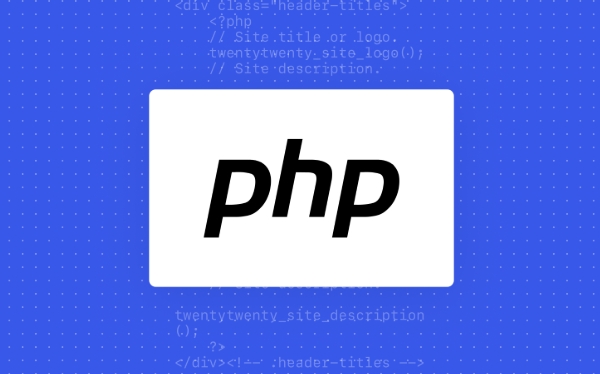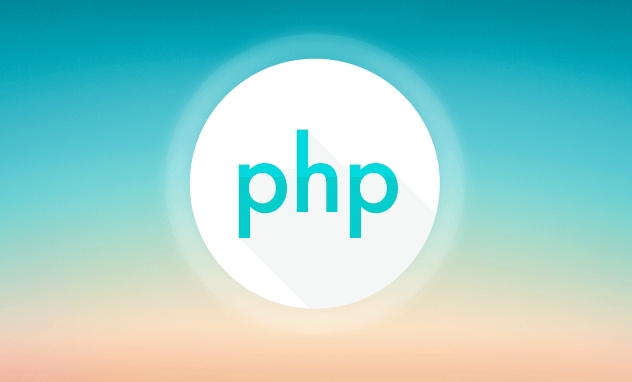Building a Production-Ready PHP Stack on CentOS 9
Jul 25, 2025 am 09:48 AMInstall Nginx or Apache with firewall configuration for HTTP/HTTPS. 2. Install PHP 8.2 from the Remi repository and verify version. 3. Configure PHP-FPM with optimized php.ini and OPcache settings. 4. Install and secure MariaDB, then create a dedicated database and user. 5. Secure the stack using Let’s Encrypt for HTTPS, disable dangerous PHP functions, run PHP-FPM under least privilege, and enforce SELinux policies. 6. Deploy apps with proper file permissions, avoid root execution, and store configuration outside web root. 7. Monitor logs, enable slow request logging, automate security updates via dnf-automatic, and schedule regular backups of code and databases. This production-ready PHP stack on CentOS 9 ensures security, performance, and maintainability for deploying modern PHP applications reliably.

Setting up a production-ready PHP stack on CentOS 9 means more than just installing PHP and a web server — it’s about security, performance, maintainability, and reliability. CentOS 9 (Stream), being a modern enterprise Linux distribution, provides a solid foundation. Here's how to build a robust PHP stack that’s suitable for real-world deployment.

1. Install and Configure Apache or Nginx
While both Apache and Nginx are viable, Nginx is often preferred in production for its performance and low memory footprint. However, Apache with mod_php or PHP-FPM is still widely used and easier for beginners.
Install Nginx:
sudo dnf install nginx -y sudo systemctl enable nginx sudo systemctl start nginx
Install Apache (alternative):
sudo dnf install httpd -y sudo systemctl enable httpd sudo systemctl start httpd
? Don’t forget to adjust the firewall:
sudo firewall-cmd --permanent --add-service=http sudo firewall-cmd --permanent --add-service=https sudo firewall-cmd --reload
For better performance and flexibility, use PHP-FPM regardless of your web server choice.
2. Install PHP 8.1 from Remi Repository
CentOS 9’s default repositories may not include the latest PHP versions. Use the Remi repository, which is trusted and widely used.

Enable Remi and install PHP:
sudo dnf install https://rpms.remirepo.net/enterprise/remi-release-9.rpm -y sudo dnf module enable php:8.2 -y sudo dnf install php php-cli php-fpm php-mysqlnd php-gd php-xml php-mbstring php-pdo php-opcache php-curl php-zip -y
? Use PHP 8.2 or 8.3 if your apps support it — they offer better performance and features.
Verify installation:
php -v
3. Configure PHP-FPM for Nginx or Apache
PHP-FPM improves process management and is essential for high-traffic sites.
Start and enable PHP-FPM:
sudo systemctl enable php-fpm sudo systemctl start php-fpm
Configure Nginx to use PHP-FPM:
Edit your site config (e.g., /etc/nginx/conf.d/default.conf) and update the server block:
location ~ \.php$ {
fastcgi_pass 127.0.0.1:9000;
fastcgi_index index.php;
fastcgi_param SCRIPT_FILENAME $document_root$fastcgi_script_name;
include fastcgi_params;
}? For Apache, you can use
mod_proxy_fcgito route PHP requests to PHP-FPM, or stick withlibphpif simpler setup is acceptable.
Optimize php.ini:
Edit /etc/php.ini and adjust:
upload_max_filesize = 64M post_max_size = 128M memory_limit = 512M max_execution_time = 300 expose_php = Off cgi.fix_pathinfo = 0
Also enable OPcache in /etc/php.d/opcache.ini:
opcache.enable=1 opcache.memory_consumption=256 opcache.max_accelerated_files=20000 opcache.validate_timestamps=0 ; Only in production; disable for dev opcache.fast_shutdown=1
4. Set Up a Database (MariaDB or MySQL)
Most PHP apps need a database. MariaDB is default on CentOS.
Install MariaDB:
sudo dnf install mariadb-server mariadb -y sudo systemctl enable mariadb sudo systemctl start mariadb
Secure installation:
sudo mysql_secure_installation
Create a database and user:
CREATE DATABASE appdb; CREATE USER 'appuser'@'localhost' IDENTIFIED BY 'strong_password'; GRANT ALL PRIVILEGES ON appdb.* TO 'appuser'@'localhost'; FLUSH PRIVILEGES;
5. Secure the Stack
Security is critical in production.
Use HTTPS with Let’s Encrypt:
sudo dnf install certbot python3-certbot-nginx -y # or python3-certbot-apache sudo certbot --nginx -d yourdomain.com
Disable unused PHP functions (optional but recommended): In
php.ini:disable_functions = exec,passthru,shell_exec,system,proc_open,popen
Run PHP-FPM with least privilege: Edit
/etc/php-fpm.d/www.conf:user = nginx group = nginx listen.owner = nginx listen.group = nginx
Enable SELinux policies: CentOS 9 uses SELinux by default. Ensure it's enforcing:
sudo setsebool -P httpd_can_network_connect_db 1 # For DB connections sudo setsebool -P httpd_exec_mem 0 # Disable if not needed
6. Deploy Your PHP App Securely
- Place your app in
/var/www/htmlor a custom directory like/var/www/myapp. - Set correct permissions:
sudo chown -R nginx:nginx /var/www/myapp sudo chmod -R 755 /var/www/myapp sudo chmod 644 /var/www/myapp/*.php
- Avoid running web server as root.
- Use
.envfiles outside the web root for configuration.
7. Monitor and Maintain
Log monitoring:
- Nginx:
/var/log/nginx/error.log - PHP-FPM:
/var/log/php-fpm.log - Enable slow log in PHP-FPM for debugging performance issues.
- Nginx:
Automate updates: Use
dnf-automaticto apply security patches:sudo dnf install dnf-automatic -y sudo systemctl enable dnf-automatic.timer sudo systemctl start dnf-automatic.timer
Backup regularly: Automate database and code backups using
cronandmysqldump.
Final Notes
A production-ready PHP stack on CentOS 9 isn’t just about installing components — it’s about configuring them securely, optimizing performance, and planning for maintenance. Stick to trusted repos like Remi, use PHP-FPM, enable HTTPS, and keep SELinux on.
With this setup, you’re ready to deploy Laravel, WordPress, or any modern PHP application in a secure, scalable environment.
Basically, keep it updated, locked down, and monitored.
The above is the detailed content of Building a Production-Ready PHP Stack on CentOS 9. For more information, please follow other related articles on the PHP Chinese website!

Hot AI Tools

Undress AI Tool
Undress images for free

Undresser.AI Undress
AI-powered app for creating realistic nude photos

AI Clothes Remover
Online AI tool for removing clothes from photos.

Clothoff.io
AI clothes remover

Video Face Swap
Swap faces in any video effortlessly with our completely free AI face swap tool!

Hot Article

Hot Tools

Notepad++7.3.1
Easy-to-use and free code editor

SublimeText3 Chinese version
Chinese version, very easy to use

Zend Studio 13.0.1
Powerful PHP integrated development environment

Dreamweaver CS6
Visual web development tools

SublimeText3 Mac version
God-level code editing software (SublimeText3)
 Harnessing the Power of WSL 2 for a Linux-Native PHP Development Workflow
Jul 26, 2025 am 09:40 AM
Harnessing the Power of WSL 2 for a Linux-Native PHP Development Workflow
Jul 26, 2025 am 09:40 AM
WSL2isthenewstandardforseriousPHPdevelopmentonWindows.1.InstallWSL2withUbuntuusingwsl--install,thenupdatewithsudoaptupdate&&sudoaptupgrade-y,keepingprojectsintheLinuxfilesystemforoptimalperformance.2.InstallPHP8.3andComposerviaOnd?ejSury’sPPA
 Mastering PHP-FPM and Nginx: A High-Performance Setup Guide
Jul 25, 2025 am 05:48 AM
Mastering PHP-FPM and Nginx: A High-Performance Setup Guide
Jul 25, 2025 am 05:48 AM
NginxhandlesstaticfilesandroutesdynamicrequeststoPHP-FPM,whichprocessesPHPscriptsviaFastCGI;2.OptimizePHP-FPMbyusingUnixsockets,settingpm=dynamicwithappropriatemax_children,spareservers,andmax_requeststobalanceperformanceandmemory;3.ConfigureNginxwit
 Setting Up PHP on macOS
Jul 17, 2025 am 04:15 AM
Setting Up PHP on macOS
Jul 17, 2025 am 04:15 AM
It is recommended to use Homebrew to install PHP, run /bin/bash-c"$(curl-fsSLhttps://raw.githubusercontent.com/Homebrew/install/HEAD/install.sh)" to install Homebrew, and then execute brewinstallphp or a specified version such as brewinstallphp@8.1; after installation, edit the php.ini file in the corresponding path to adjust memory_limit, upload_max_filesize, post_max_size and display_
 Unlocking Peak PHP Performance: Configuring OPcache and JIT Compilation
Jul 24, 2025 pm 09:58 PM
Unlocking Peak PHP Performance: Configuring OPcache and JIT Compilation
Jul 24, 2025 pm 09:58 PM
OPcache and JIT are the core tools for PHP8.0 performance optimization. Correct configuration can significantly improve execution efficiency; 1. Enable OPcache and set opcache.enable=1, opcache.memory_consumption=192, opcache.max_accelerated_files=20000, opcache.validate_timestamps=0 to implement opcode caching and reduce parsing overhead; 2. Configure JIT to enable tracking JIT through opcache.jit_buffer_size=256M and opcache.jit=1254
 Deploying a Scalable PHP Environment on AWS EC2 from Scratch
Jul 26, 2025 am 09:52 AM
Deploying a Scalable PHP Environment on AWS EC2 from Scratch
Jul 26, 2025 am 09:52 AM
LaunchanEC2instancewithAmazonLinux,appropriateinstancetype,securesecuritygroup,andkeypair.2.InstallLAMPstackbyupdatingpackages,installingApache,MariaDB,PHP,startingservices,securingMySQL,andtestingPHP.3.DecouplecomponentsbymovingdatabasetoRDS,storing
 Demystifying PHP Compilation: Building a Custom PHP from Source for Optimal Performance
Jul 25, 2025 am 06:59 AM
Demystifying PHP Compilation: Building a Custom PHP from Source for Optimal Performance
Jul 25, 2025 am 06:59 AM
CompilingPHPfromsourceisnotnecessaryformostprojectsbutprovidesfullcontrolforpeakperformance,minimalbloat,andspecificoptimizations.2.ItinvolvesconvertingPHP’sCsourcecodeintoexecutables,allowingcustomizationlikestrippingunusedextensions,enablingCPU-spe
 Automating Your PHP Environment Setup: Integrating PHP into a CI/CD Pipeline
Jul 26, 2025 am 09:53 AM
Automating Your PHP Environment Setup: Integrating PHP into a CI/CD Pipeline
Jul 26, 2025 am 09:53 AM
ChooseaCI/CDplatformlikeGitHubActionsorGitLabCIfortightversioncontrolintegrationandminimalinfrastructure;2.DefineaconsistentPHPenvironmentusingcontainerizationwithimageslikephp:8.2-cliorcomposer:latestandinstalldependenciesviacomposerinstall--no-inte
 Troubleshooting Common PHP Installation Pitfalls: A Diagnostic Checklist
Jul 26, 2025 am 09:50 AM
Troubleshooting Common PHP Installation Pitfalls: A Diagnostic Checklist
Jul 26, 2025 am 09:50 AM
VerifysystemrequirementsanddependenciesbyconfirmingOScompatibilityandinstallingessentiallibrariesandbuildtools,usingpackagemanagerslikeaptoryumtosimplifydependencymanagement.2.CheckPHPconfigurationandcompilationerrorsbyrunningaminimal./configurecomma







